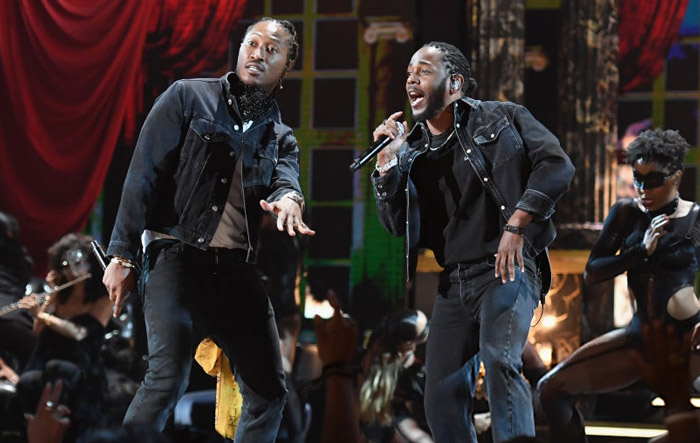NY Times contest cites student essay on rap music
- July 13, 2017
- By Melody Walker
- 4 minute read


Jack Zuckerman’s 450 word persuasive essay on the importance of teaching rap music in schools was one of a record-breaking 7,895 entries in The New York Times’ Fourth Annual Student Editorial Contest. That’s stiff competition, but the rising sophomore was pleased to discover he earned one of 45 honorable mentions. Congrats, Jack! There were 10 winners and 15 runners-up. You can read Jack’s essay below the Q &A.
We caught up with Jack in his hometown Manheim Township near Lancaster, PA, where he’s been working this summer at a minor league baseball stadium. He plans to double-major in film studies and business, possibly marketing.
Q: Were you surprised when you received the NY Times Contest honorable mention?
I was definitely surprised, especially because they didn’t send out emails. I found out while I was scanning the titles of recognized essays and saw my own at the bottom.
Q: Which artists would you feature in a course on rap?
At least one from every major area in rap music, so maybe Tupac for the West Coast, Nas for the East Coast, OutKast for the South, and then an artist not necessarily affiliated with a geographical movement like MF Doom.
Q: Are you going to try to get into Prof. Jeffrey McCune’s Kanye West course next year? [McCune is associate professor of women, gender and sexuality studies and African and African-American studies at WashU. He teaches “The Politics of Kanye West: Black Genius and Sonic Aesthetics.” ]
Definitely, but “try” is the key word there.
Q: What are you looking forward to when you return to campus?
I’m mostly looking forward to seeing my friends and getting more involved with my activities on campus.
Here’s the editorial Jack submitted to The New York Times contest:
We Should be Teaching Rap Music in Schools
I didn’t understand Toni Morrison until I heard Kendrick Lamar. Sure, I could try to interpret her prose and analyze her symbolism, but I couldn’t feel her work until I started listening to rap music. Nas, Killer Mike, and Kendrick connected the dots, they ripped Morrison’s words from the pages and threw them on the streets.
That sentiment isn’t meant as a slight on Morrison, but a testament to the power of music. For many high school and college students, music takes the formalism of literature and frees it from its didacticism. Bob Dylan breathes palpable fervor into an emotionally confusing decade of American history, 1920’s jazz voices the breaking and rebuilding of the interwar period. It would be a shame, then, to ignore the opportunity that today’s students have to learn about the current cultural and political climate through the lens of modern music.
When Kendrick Lamar released his sophomore album To Pimp a Butterfly in 2015, a post-Trayvon-Martin, post-Michael-Brown America received it as a declaration of fearlessness and pride in the face of racial injustices. As New York Times writer Joe Coscarelli recounts, “Awash in black music, black pride and shame, [Kendrick] attempted to propel the ghosts of Nelson Mandela, Tupac Shakur, Huey Newton and Michael Jackson through the will of his conflicted rhymes.” The rapper’s cultural dominance could not be denied after one of the album’s singles “Alright” became the anthem for the Black Lives Matter movement. Suddenly, Lamar became a living, breathing representation of Baldwin and Angelou and Hughes and so many other socially conscious artists.
Moreover, Lamar and his contemporaries demand attention, especially from a younger population that tends to favor beats over books. As, almost-inarguably, the most pivotal musical trend of the past thirty years, rap music is a conduit for ideas and emotions that leads straight to the young-adult masses. With “socially-conscious hip-hop” as a rich and expanding sub-genre, there’s a supply and demand relationship begging to be utilized.
So why are we not teaching rap music like literature? Well, to a certain extent we are. New college courses about Kanye West, OutKast, and other specific rap artists are gaining popularity on campuses across the country. But this type of curriculum is not yet normalized to a point of serious integration, and it won’t be until we remove the stigma of senseless violence and sexism that surrounds rap music. We should be championing the music that avoids and surpasses these stereotypes, often by facing them head on. We should recognize that some of the loudest voices of our generation come from rappers. We should listen to Kendrick: “Let these words be your earth and moon, you consume every message.”
Works Cited
Coscarelli, Joe. “Kendrick Lamar on the Grammys, Black Lives Matter and His Big 2015.” The New York Times. The New York Times, 29 Dec. 2015. Web. 27 Mar. 2017.
Lamar, Kendrick. Mortal Man. Kendrick Lamar. Sounwave, 2015. CD.
Yoo, Noah. “OutKast Class Being Offered at Georgia College.” OutKast Class Being Offered at Georgia College | Pitchfork. Condé Nast, 06 Jan. 2017. Web. 27 Mar. 2017.
Image: Future and Kendrick Lamar at the BET Awards June 25, 2017.
Media inquiries
For assistance with media inquiries and to find faculty experts, please contact Washington University Marketing & Communications.
Monday–Friday, 8:30 to 5 p.m.
Sara Savat
Senior News Director, Business and Social Sciences
